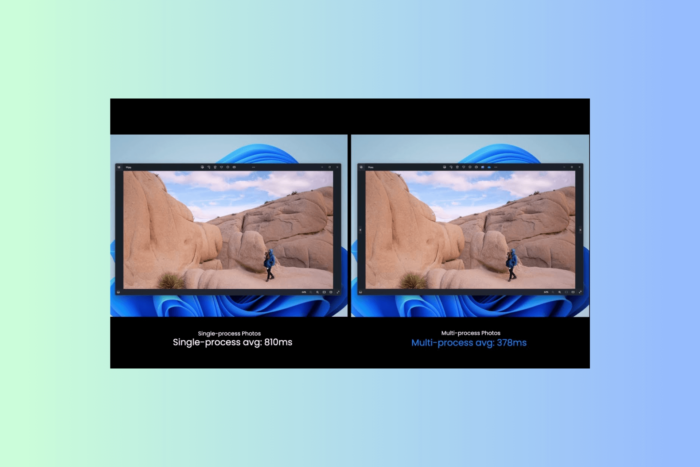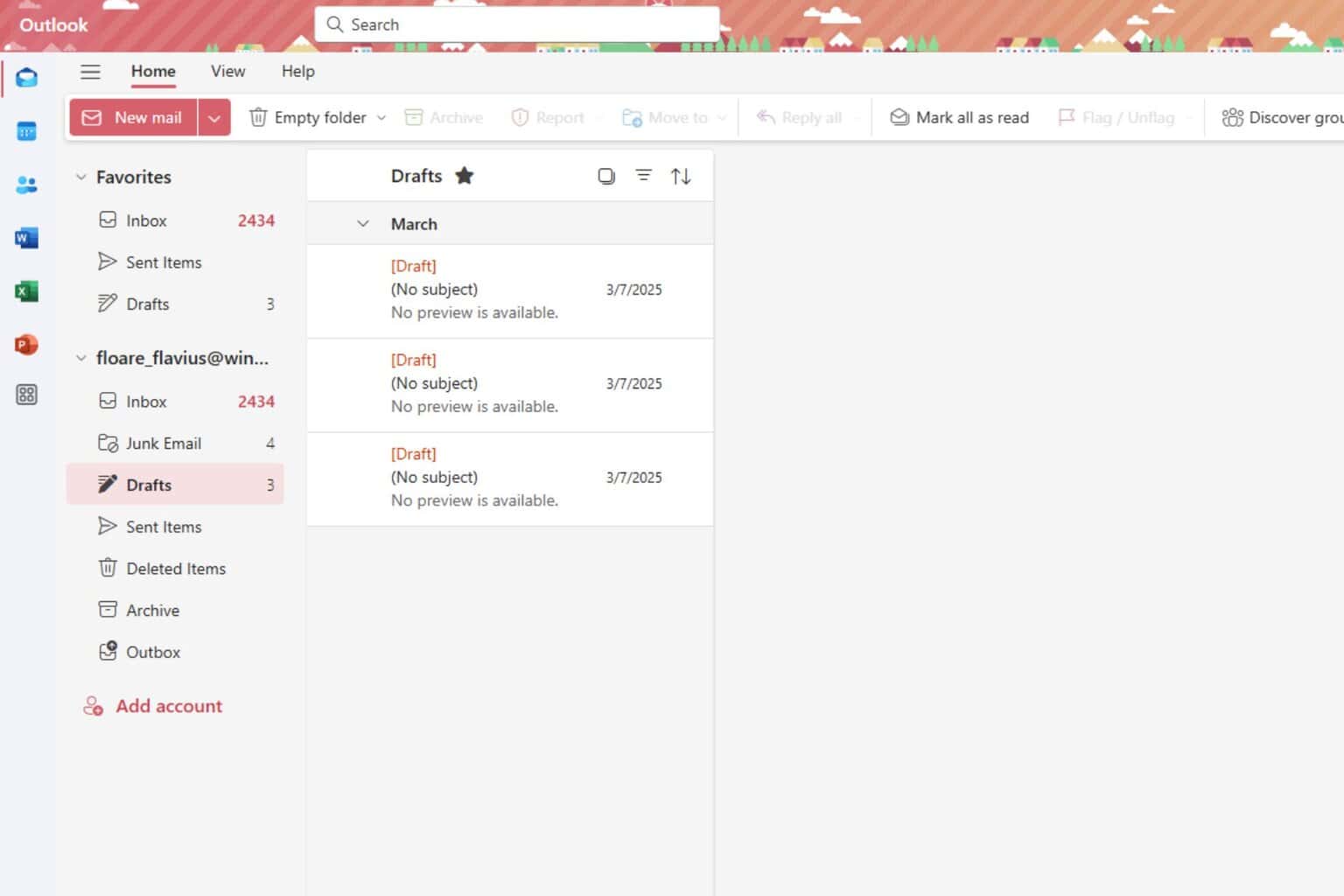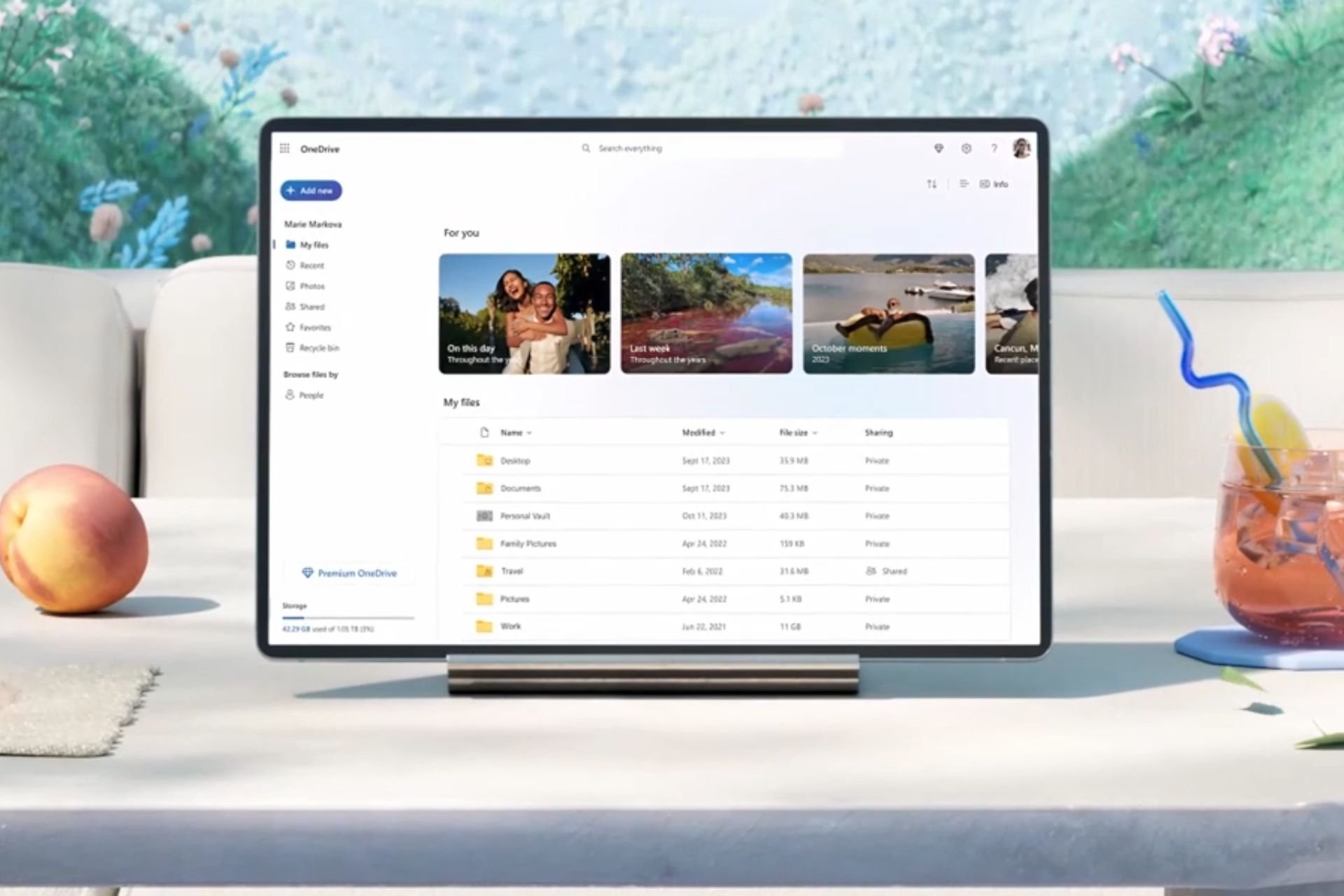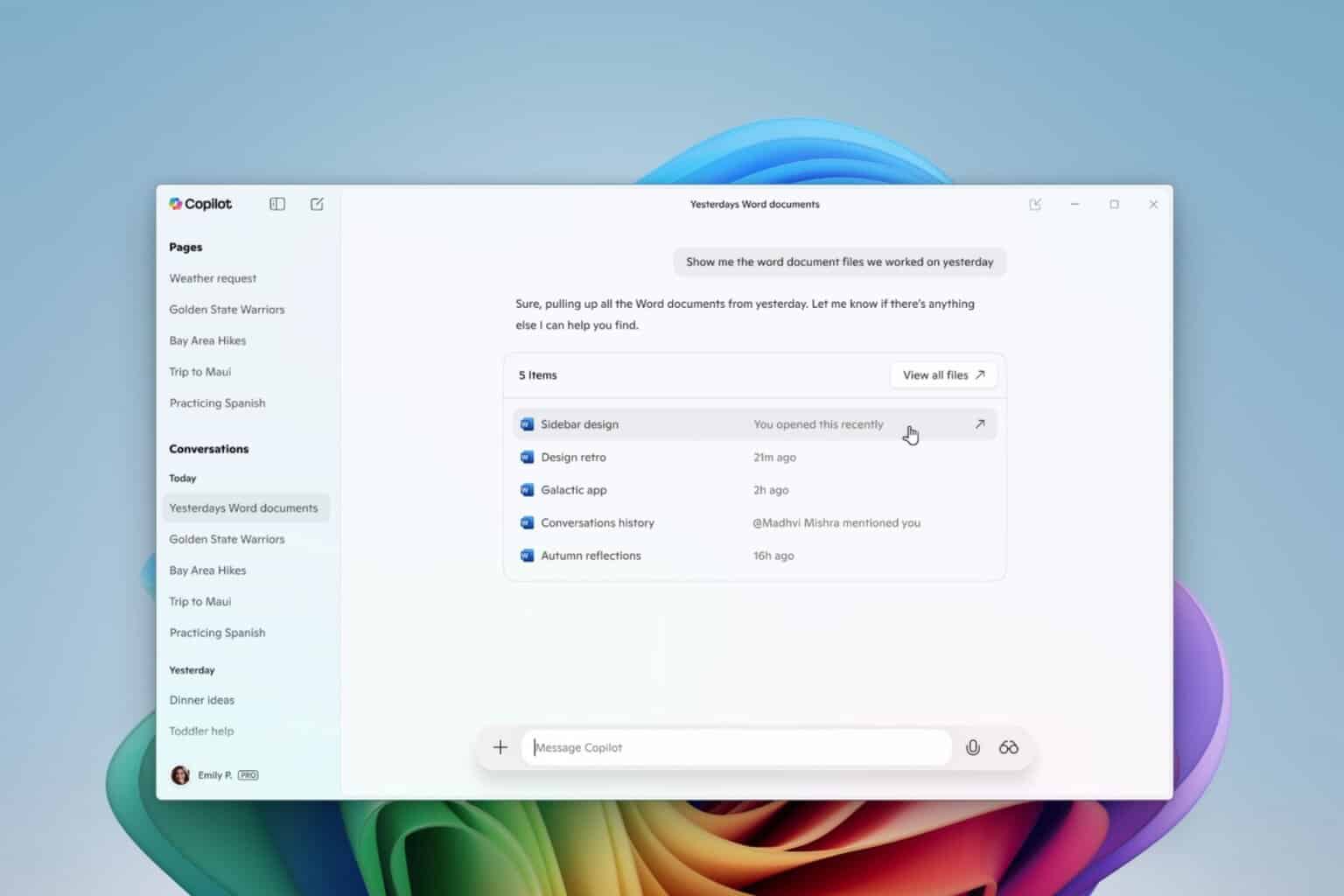Microsoft Photos gets significant update, transitions from UWP to Windows App SDK
The update is currently rolling out
4 min. read
Published on
Read our disclosure page to find out how can you help Windows Report sustain the editorial team. Read more

A significant update for the Microsoft Photos app was rolled out to Windows Insiders and is now rolling out to retail customers, starting with version 2024.11050.3002.0 and above.
The Microsoft Photos app has undergone a major platform transition in this update, moving from Universal Windows Platform (UWP) to the Windows App SDK.
What were the challenges?
Microsoft Photos is one of the most used applications, so the Photos teams have been introducing new innovative features like Background Removal and a Slide Show.
Therefore, the challenge was maintaining the ability to introduce new features on UWP while progressing the platform transition to Windows App SDK on Photos app.
So to make the transition smooth, they used different strategies like:
- Parallel Pull Request build validation for both UWP & Windows App SDK app variants
- Conditional compilation (ifdefs) for similar but incompatible APIs
- Namespace aliases for equivalent Windows:: and Microsoft:: APIs
- Conditional inclusion of XAML source files since conditional compilation is unsupported
What are the benefits?
The transition from UWP to Windows App SDK will be beneficial for users in many ways; here are a few of them:
- Enhanced performance: It leverages Win32 APIs and processes, which provide superior performance compared to UWP. This can be handy in operations like dealing with large photo collections.
- Streamlined architecture: Its more unified development approach lets developers use a single codebase for both UWP and Win32 applications, simplifying the development process and reducing complexity in app architecture.
- Access to Win32 APIs: Direct access to Win32 APIs allows more flexibility in app development and integration with diverse system functionalities.
- Improved compatibility: Windows App SDK apps can be distributed via different channels, including the conventional desktop deployment methods.
- Automatic updates: The platform updates are packaged within the app itself, ensuring that you automatically receive the latest stability and performance improvements.
What are the differences between UWP and Windows app SDK?
| UWP | Windows App SDK |
| Both new features and platform updates are managed separately, resulting in potential compatibility issues. | Techniques like parallel build validation and conditional compilation ensured concurrent compatibility with both platforms, streamlining development efforts. |
| Processes run at low integrity level (lowIL), which imposes restrictions on certain APIs and requires additional user confirmation prompts. | Processes run at medium integrity level (mediumIL), allowing higher privilege levels and operations like saving edited files in the same folder without your intervention. |
| Uses multi-process architecture, including a lowIL primary process and a mediumIL background process (PhotosService.exe), to ensure acceptable performance. | Comes with the integration of complex logic into a single process, eradicating the need for inter-process communication and simplifying app architecture, resulting in improved performance |
| Works on the ASTA (Application Single-Threaded Apartment) threading model, with mechanisms to protect the XAML UI thread against reentrancy. | Based on a regular STA (Single-Threaded Apartment) model, which requires extra care when executing calls from the XAML UI thread to avoid reentrancy issues and Stowed Exceptions. |
| Comes with Autoplay support which allows you to connect flash drives and mobile phone devices to import media files | AutoPlay support has not yet been implemented. Therefore, alternate methods like Win32 shell APIs and desktop3:AutoPlayHandler. are required. |
| Platform code is shipped as part of the Windows operating system, so you need to wait for Windows Update servicing patches for updates. | Most platform codes are shipped as part of the WindowsAppRuntime package, so you receive the latest stability and performance improvements once you install the app package. |
The transition to Windows App SDK allows developers to be more flexible, provide improved performance and enhanced compatibility, and ensure users a more seamless and feature-rich experience.
To check the version on your Photos app, launch the app, then click the Settings icon from the top right corner. Next, scroll down to find About and check the version to ensure you have the latest one installed.
What do you think about the Photos app transition to Windows App SDK? Share your views with our readers in the comments section below.









User forum
0 messages